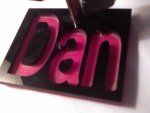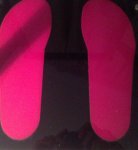SMIDSY
0
- Joined
- Mar 7, 2008
- Messages
- 881
- Points
- 0
yngndrw said:Hi,
Okay I'm not new to electronics, however I am new to lasers.
I appreciate that my questions have probably been asked many times before, but there's so much information out there that it can take a life time to read through. I have tried my best at researching but sometimes it's best just to ask.
I am wanting to build a 2 axis CNC laser cutter and engraver. I will be engraving plastic and I will be cutting upto aprox 1cm of neoprene, aka rubber foam.
I have read that a CD writer's laser can engrave plastic and I assume it will be able to cut through neoprene.
I have been looking at getting the following drive to source the laser diode: Pioneer 112D (Was going to put a link to it but it wouldn't let me.)
I would like some advice on my project:
1) Would this laser be able to do the task ?
2) What kind of power do these lasers output ?
3) What kind of safety glasses / screen (I.e. Sheet that I can put up around the CNC so that people outside of the screen don't have to ware anything.) can be used ? (Links to UK suppliers would be REALLY helpful.)
4) What can I use for the optics ? I'll presume that I can't just use the diode on it's own, or can I ? Can optics be borrowed from the drive ?
5) I've heard about "wire cutters" being used to remove the laser diodes from CD drives. What are these ?
6) How much focal control is needed ? Do I need a third axis or not ? Can I just adjust the laser power instead ?
7) What can I use as a table that won't be cut / damaged by the laser when cutting neoprene ?
8) What current should I be using for the laser from the drive mentioned above, for each task ?
9) Anything else that I need to know ?
Thank you for any help,
-Andrew.
IDK if this is helpful but I knwo from experience that if you want to cut through ~5cm of acrylic at a reasonable speed then you need 40W of IR power.
The machine I've used has adjustable focus so it automatically focuses for a hairline beam it can also set the focus inside the clear acrylic and engrave letters inside the block which looks really nice as well as engraving on the surface...
to 20W version takes much longer to cut but can easily cut 2cm acrylic and etch and engrave.
neither laser can cut metal except the 40W one which can just about cut 1mm aluminium (never tried larger)







